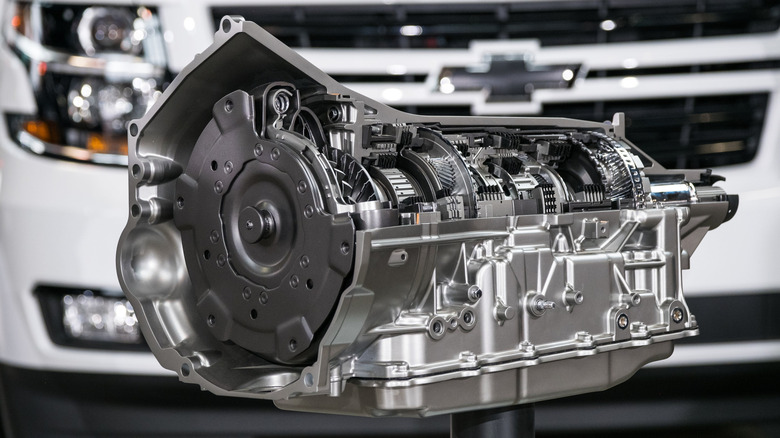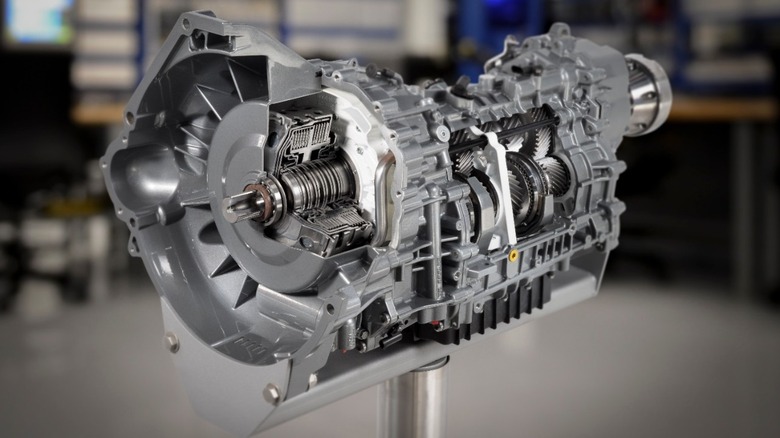Is Having More Gears Better On An Automatic Transmission?
If you've ever paid attention to the number of gears in your transmission, you might've noticed that those numbers have gone up over the years. Early automatic transmissions like the GM Hydra-Matic had four speeds, but for a long time after that, three-speed transmissions were pretty common. If you're familiar with the term "three on the tree," you're probably aware of exactly which era we're talking about. In the 1990s, there was an increase in five-speed automatics, but these days, however, three, four, or even five gears would be out of the ordinary.
In 2025, many manual transmissions typically still have six (or in some cases seven) forward gears, but automatics have continued to climb in gear count. Six-speed automatics are still common in sports cars like the Toyota GR86, but vehicles like the new 2025 Chevrolet Corvette get eight speeds. And big pickup trucks like the Ford F-150 or the 2025 GMC Sierra 1500 often have 10-speed automatic transmissions. Why? Fuel economy. More gears added to an automatic transmission generally means that an engine can have lower RPMs at cruising speeds, reducing the amount of fuel used to drive it forward — and from there, fuel economy goes up.
The benefits and drawbacks of more gears
Better fuel economy is certainly a welcome benefit for any car. In the case of big trucks like the F-150 or Sierra 1500, fuel economy is at a premium. There are, however, some potential drawbacks to upping the gear count exponentially. Adding more gears to a transmission means there's physically more hardware to put into the transmission case. That means packaging and weight can become an issue, and the price of producing the transmission goes up, too. Adding more gears can also decrease driving enjoyment, with frequent inopportune shifting interrupting acceleration.
Are there too many gears in modern cars? Some drivers might think so, but modern transmissions like the ZF 8-speed automatic have an honored spot on our list of the best transmissions ever offered on a production car. With a transmission as smooth-shifting and quick as the ZF, it's hard to argue that high gear-count transmissions are all bad. Automatics like the ZF-8 are also designed with hybridization in mind, so hybrid systems can potentially be added later that increase fuel economy without adding any extra gears. And don't forget dual-clutch automatics like the seven-speed dual clutch transmission fitted to the epic Ford Mustang GT500, which shifted gears with lightning speed and was the right transmission for that package, no doubt — proving that not all automatics are bad.

